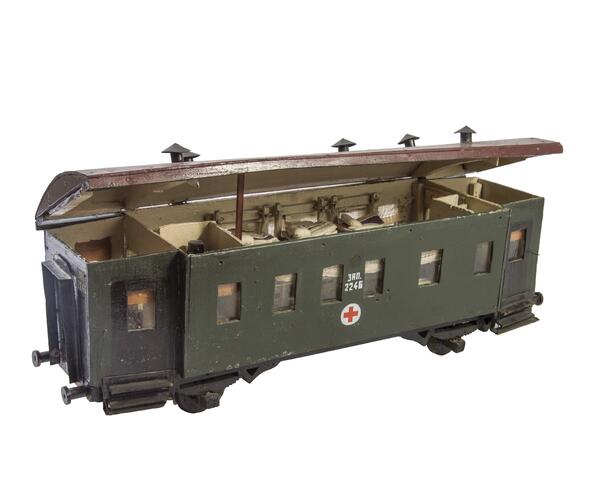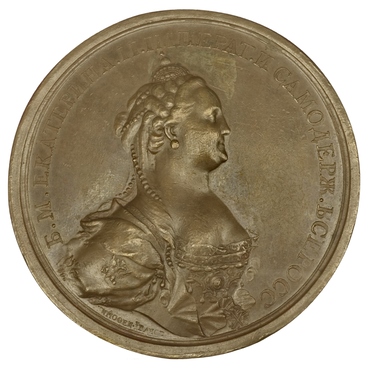Hospital trains were brought into service in Russia in the second half of the 19th century. They came into widespread use along with the development of railways. During the Russo-Japanese War (1904–1905), more than 87 thousand injured servicemen were transported to the rear from the Far East. Hospital trains were used in World War I (1914–1918), but it was during World War II that these trains transported most of the wounded.
In 1941–1945, all hospital trains were numbered and assigned to Casualty Clearing Stations (CCS). They were divided into ambulance trains, temporary and permanent hospital trains. Small ambulance trains transported mostly the wounded with minor injuries and no further than the field triage unit. Modified boxcars were used for this type of trains. Temporary hospital trains transported people from front-line stations to army hospital bases, and during the transportation, medical personnel delivered medical care to the injured. Permanent trains with all-metal passenger cars evacuated the wounded from army hospital bases behind the front lines.
The permanent hospital trains were used not only as a means of evacuation, but also as fully functional hospitals on wheels. Military doctors performed operations, provided therapeutic assistance and rehabilitation for the wounded. Hospital trains were well equipped and had fully equipped operating rooms, dressing rooms, isolators for contagious patients, storage rooms, workshops, mobile power and water tank cars. There was also a separate personnel railroad car and a kitchen car, where food for the wounded was cooked. These trains saved hundreds of thousands of lives.
Hospital trains staff often decided on their own how to optimize work, improve the quality of accommodation, food, and leisure for the sick and the wounded. One of these improvement suggestions was the idea to create kitchen gardens right on top of the railroad cars, and put chickens and pigs underneath.
The model of a hospital train from the collection of the Military Medical Museum is made on a scale of 1 to 10. The maker installed six two-tier miniature berths with bedclothes for seriously injured and sick soldiers. There is a medical front desk and a washstand. These were the cars that were widely used in the formation of hospital trains during World War II.
In 1941–1945, all hospital trains were numbered and assigned to Casualty Clearing Stations (CCS). They were divided into ambulance trains, temporary and permanent hospital trains. Small ambulance trains transported mostly the wounded with minor injuries and no further than the field triage unit. Modified boxcars were used for this type of trains. Temporary hospital trains transported people from front-line stations to army hospital bases, and during the transportation, medical personnel delivered medical care to the injured. Permanent trains with all-metal passenger cars evacuated the wounded from army hospital bases behind the front lines.
The permanent hospital trains were used not only as a means of evacuation, but also as fully functional hospitals on wheels. Military doctors performed operations, provided therapeutic assistance and rehabilitation for the wounded. Hospital trains were well equipped and had fully equipped operating rooms, dressing rooms, isolators for contagious patients, storage rooms, workshops, mobile power and water tank cars. There was also a separate personnel railroad car and a kitchen car, where food for the wounded was cooked. These trains saved hundreds of thousands of lives.
Hospital trains staff often decided on their own how to optimize work, improve the quality of accommodation, food, and leisure for the sick and the wounded. One of these improvement suggestions was the idea to create kitchen gardens right on top of the railroad cars, and put chickens and pigs underneath.
The model of a hospital train from the collection of the Military Medical Museum is made on a scale of 1 to 10. The maker installed six two-tier miniature berths with bedclothes for seriously injured and sick soldiers. There is a medical front desk and a washstand. These were the cars that were widely used in the formation of hospital trains during World War II.



